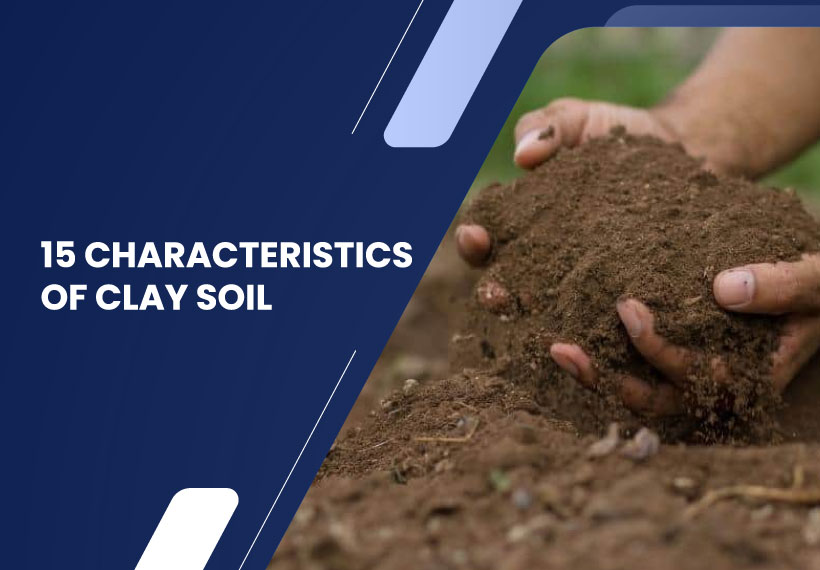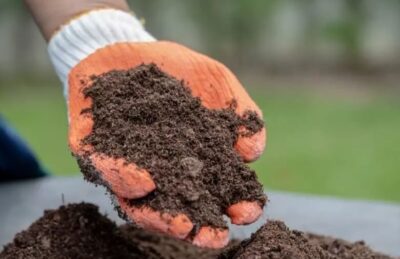15 Characteristics of Clay Soil

When it comes to gardening and landscaping, understanding your soil type is essential for successful plant growth and overall landscape health. Clay soil is one of the common soil types found in various regions.This article explores 15 key characteristics of clay soil, its advantages, disadvantages, and tips on managing it effectively.
What is Clay Soil?
Clay soil comprises very fine particles, predominantly clay minerals, and a low percentage of organic matter. It has a distinct texture, often sticky and dense when wet, and can easily be moulded into shapes.
15 Key Characteristics of Clay Soil

1. Color and Appearance
One of the distinguishing features of clay soil is its colour, which can vary from light grey to deep red, depending on the region and the minerals present. When dry, it often forms large, hard clods, making it difficult to work with.
2. High Water Retention
One of the defining features of clay soil is its high water retention capacity. The fine particles in clay hold water for extended periods, making it an excellent choice for drought-prone areas. However, excessive water retention can also lead to poor drainage, causing root rot in some plants.
3.Slow Drainage
Due to its tightly packed structure, clay soil has slow drainage capabilities. When watered, it takes time for the excess moisture to percolate through the soil, leading to saturated conditions during heavy rainfall.
4. Susceptibility to Compaction
Clay soil is prone to compaction, especially when wet or worked on or walked upon. Compaction reduces pore spaces and restricts root growth, affecting the overall health of plants.
5. Nutrient-Rich
Despite its challenges, clay soil has the advantage of being nutrient-rich. The negatively charged clay particles attract and retain essential nutrients, providing a steady supply to plants.
6. Difficult to Work With
Working with clay soil can be laborious and challenging. It becomes heavy and sticky when wet, making it tough to till or cultivate. On the other hand, when dry, it becomes hard and difficult to dig.
7. Prone to Cracking
In hot and dry weather, clay soil is susceptible to cracking. As it loses moisture, it shrinks, creating deep cracks on the surface, further affecting plant growth.
8. Temperature Regulation
Clay soil has moderate temperature regulation properties. It retains heat during the day and releases it slowly at night, which can benefit certain plants in colder climates.
9. High pH Levels
Clay soil tends to have higher pH levels, often leaning toward alkaline. This can affect the availability of certain nutrients to plants and may require soil amendments for pH balancing.
10. Erosion Control
Due to its density, clay soil can act as a natural barrier against erosion. Its ability to retain water helps anchor plants and prevent soil from washing away during heavy rains.
11. Shrink-Swell Potential
Clay soil exhibits a unique property called shrink-swell potential. It expands significantly when wet and contracts as it dries, leading to building foundation issues if not managed properly.
12. Soil Crust Formation
After heavy rainfall or watering, clay soil may develop a hard crust on the surface. This crust can hinder water penetration and seedling emergence.
13. Root Aeration Challenges
Due to its compact nature, clay soil can limit root aeration. Plant roots may struggle to penetrate the dense soil, leading to shallow root systems.
14. Soil Amendments
To improve clay soil, adding organic matter such as compost, peat moss, or well-rotted manure can help enhance its structure, drainage, and nutrient retention.
15. Suitable Plants for Clay Soil
Some plants thrive in clay soil conditions. Examples include certain varieties of roses, daylilies, hostas, and ornamental grasses, which are well-adapted to its unique characteristics.
FAQs
Can I grow vegetables in clay soil?
Yes, some vegetables like potatoes, kale, and beans can perform well in clay soil with proper soil preparation and care.
How often should I water plants in clay soil?
Watering frequency depends on weather conditions and plant types. Generally, watering deeply but less frequently is recommended to avoid waterlogging.
Can I use clay soil for making pottery?
Because of its fine particles and plasticity when wet, clay soil can be used to make pottery and ceramics.
Should I add sand to clay soil to improve drainage?
Adding sand to clay soil is not recommended, as it can worsen drainage and lead to the formation of a concrete-like substance.
Is it possible to transform clay soil into loamy soil?
With consistent effort and ample organic matter, it is possible to improve clay soil’s structure and transform it into loamy soil over time.
Conclusion
Understanding the characteristics of clay soil is crucial for gardeners and landscapers. While it presents challenges in terms of workability and drainage, its nutrient-rich nature can also offer significant benefits for plant growth.
Proper soil management, amendments, and choosing the right plants can make clay soil a productive and beautiful part of any landscape.

